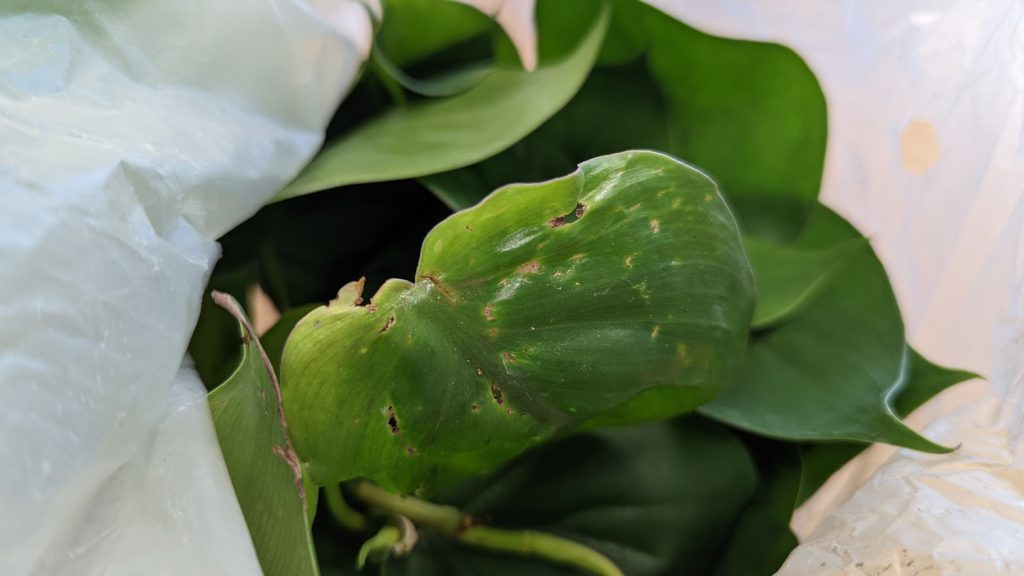
Subject: Green Peperomia
Background: This sample from a commercial nursery in Central Florida was showing signs of distortion on the upper leaves and black spots along lower leaves and stems.
Diagnosis: This is thrips damage, which is unusual for December. Thrip populations tend to be at their greatest risk of economic damage in the spring, but 2022 has been a very warm winter and thrips reports are coming in throughout the state. Many (but not all) thrips like to feed on the newest growth where the leaves are at their most tender. As the leaves grow, they grow around the damage and create distorted edges. Markedly infested leaves will have a dried-out and stippled appearance.
Treatment: A good monitoring program is key for treating thrips. Blue and yellow colored sticky traps are a good way to detect thrips as they are very mobile and hard to see. Keeping the nursery free of weeds and debris and rotating through old stock plants – which may be infected with thrips and viruses – are good cultural strategies. There are a several biological and chemical controls for thrips, and the recommendations can be found in the AskIFAS article Thrips Management Program for Horticultural Crops.
“Just Rolled into the Clinic” is an ongoing series of interesting issues from the commercial plant clinic at the UF/IFAS Mid-Florida Research and Education Center.
 0
0
